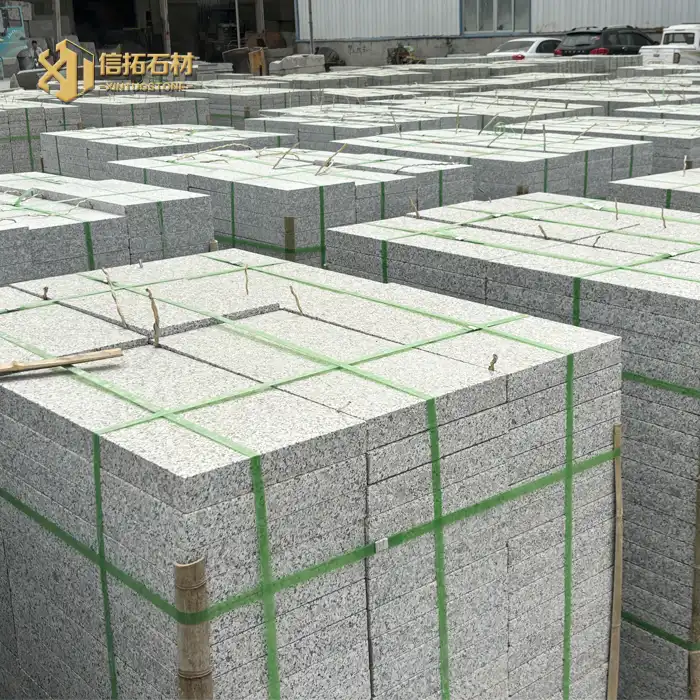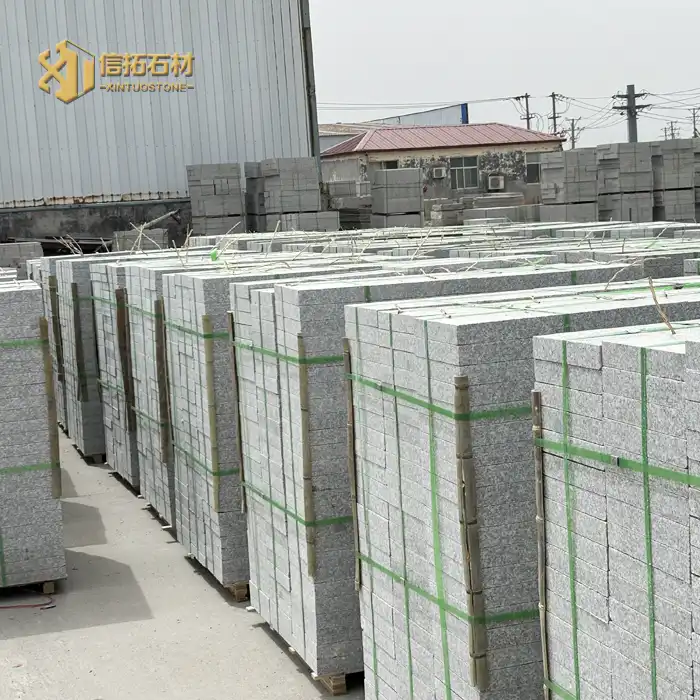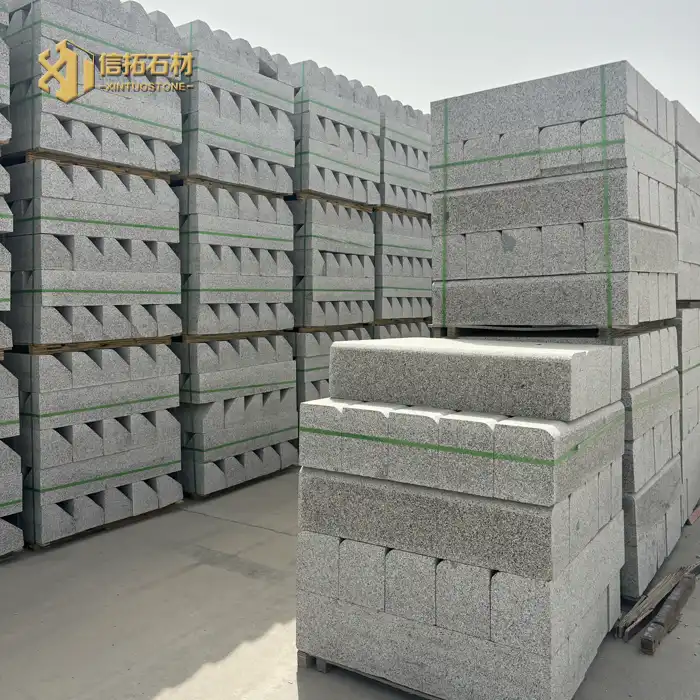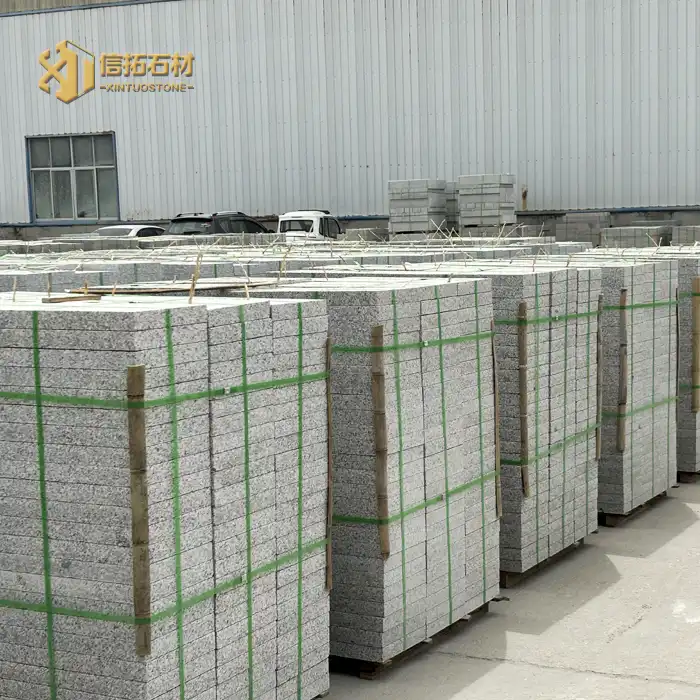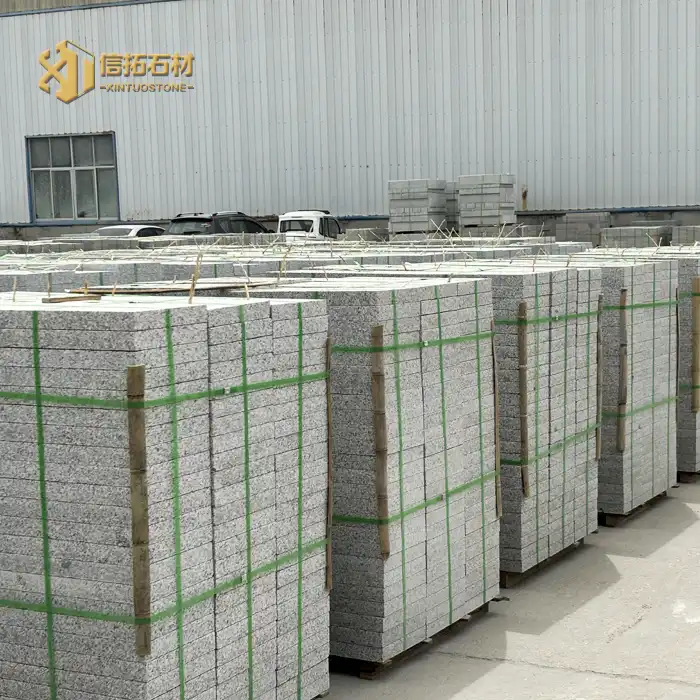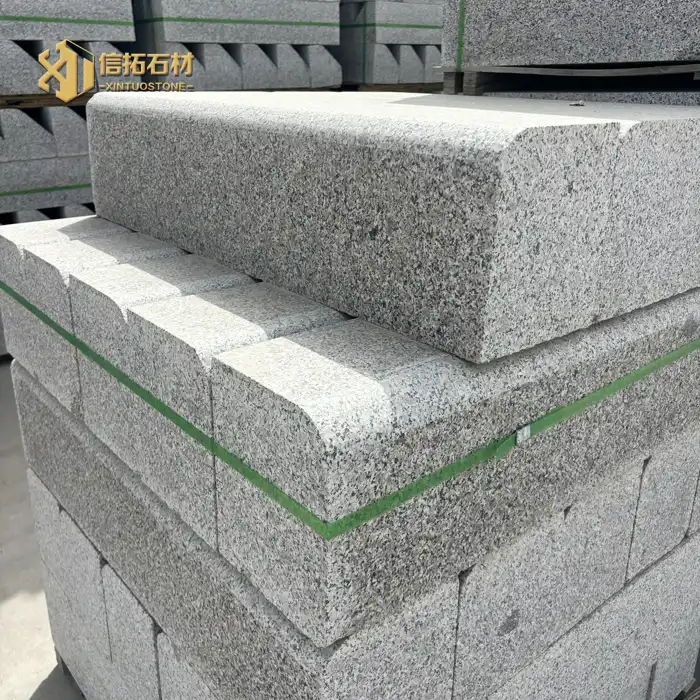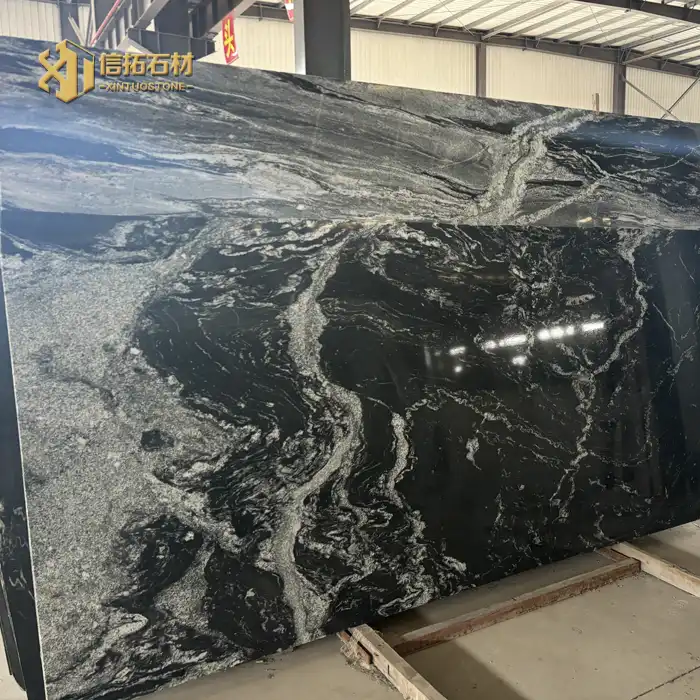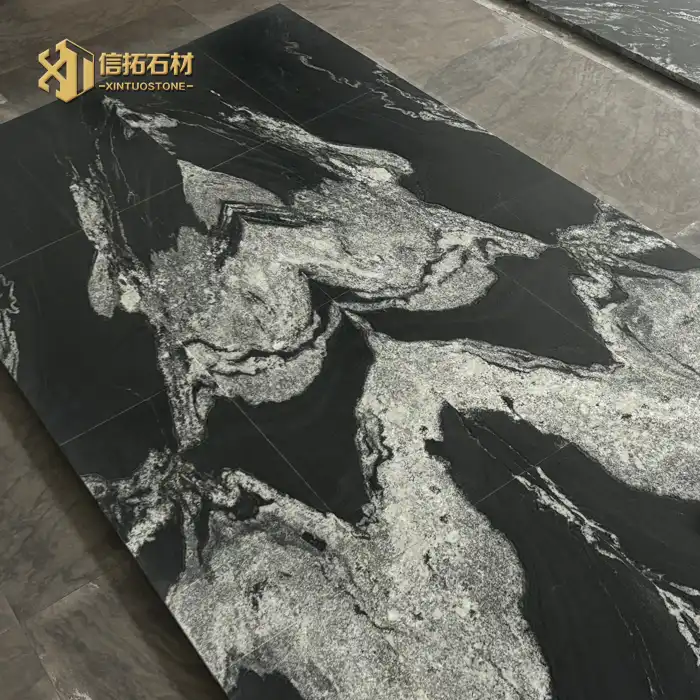How Does Granite Kerbstone Perform Under Heavy Traffic Loads?
2025-07-18 08:55:40
Granite kerbstone has become an increasingly popular choice for urban road construction and landscaping projects due to its exceptional durability and aesthetic appeal. As cities continue to expand and traffic volumes increase, it's crucial to understand how this material performs under heavy traffic loads. Granite kerbstone, known for its strength and longevity, is subjected to constant stress from vehicles, pedestrians, and environmental factors. This article delves into the performance of granite kerbstone under demanding conditions, exploring its physical properties, load-bearing capabilities, and long-term durability. We'll examine how this natural stone material withstands the rigors of daily use in high-traffic areas, its resistance to wear and tear, and its ability to maintain structural integrity over time. By understanding the performance characteristics of granite kerbstone, urban planners, architects, and construction professionals can make informed decisions about its application in various infrastructure projects.

What Are the Key Factors Affecting Granite Kerbstone's Performance in High-Traffic Areas?
Material Composition and Quality
The performance of granite kerbstone in high-traffic areas is significantly influenced by its material composition and quality. Granite kerbstone is composed of interlocking mineral crystals, primarily quartz, feldspar, and mica, which contribute to its exceptional hardness and durability. The density and compressive strength of granite kerbstone, typically ranging from 2.6 to 2.7 g/cm³ and 100 to 300 MPa respectively, play a crucial role in its ability to withstand heavy traffic loads. High-quality granite kerbstone with minimal impurities and a tight crystal structure exhibits superior performance, resisting chipping, cracking, and erosion even under intense stress. The natural variations in granite's mineral composition can affect its overall strength, making careful selection and quality control essential for optimal performance in high-traffic applications.
Installation Techniques and Base Preparation
The performance of granite kerbstone under heavy traffic loads is heavily dependent on proper installation techniques and base preparation. A well-prepared foundation, typically consisting of a compacted sub-base and a concrete bed, ensures that the granite kerbstone can effectively distribute the load and resist displacement. The use of appropriate jointing materials, such as high-strength mortar or specialized adhesives, further enhances the stability of the kerbstone system. Proper alignment and spacing between individual kerbstone units allow for thermal expansion and contraction, reducing the risk of cracking or shifting under varying temperatures and traffic loads. Additionally, the implementation of drainage systems beneath and around the granite kerbstone installation helps prevent water accumulation, which can lead to erosion and compromise the structural integrity of the kerbstone over time.
Maintenance and Regular Inspection
Regular maintenance and inspection are critical factors affecting the long-term performance of granite kerbstone in high-traffic areas. Despite its inherent durability, granite kerbstone can benefit from periodic cleaning to remove accumulated dirt, debris, and potential staining agents that may accelerate wear. Inspections should be conducted to identify any signs of damage, such as chipping, cracking, or displacement, allowing for prompt repairs to prevent further deterioration. The timely replacement of damaged sections and repointing of joints can significantly extend the lifespan of granite kerbstone installations. Furthermore, monitoring the surrounding soil conditions and addressing any erosion or subsidence issues can prevent uneven settling, which may compromise the kerbstone's ability to withstand heavy traffic loads. By implementing a proactive maintenance strategy, the performance and aesthetics of granite kerbstone can be preserved even in the most demanding urban environments.
How Does Granite Kerbstone Compare to Other Materials in Terms of Longevity and Wear Resistance?
Comparison with Concrete Kerbstones
When comparing granite kerbstone to concrete alternatives in terms of longevity and wear resistance, granite consistently demonstrates superior performance. Granite kerbstone boasts a significantly longer lifespan, often exceeding 50 years with proper maintenance, compared to concrete kerbstones, which typically last 20-30 years. The natural hardness of granite, measuring 6-7 on the Mohs scale, provides exceptional resistance to abrasion and impact, outperforming concrete in high-traffic areas. Granite kerbstone maintains its appearance and structural integrity over time, resisting the effects of freeze-thaw cycles, de-icing salts, and UV radiation more effectively than concrete. While concrete kerbstones may be more cost-effective initially, the long-term durability and reduced maintenance requirements of granite kerbstone often result in a lower lifecycle cost, making it a more economical choice for long-term infrastructure projects.
Performance Against Natural Stone Alternatives
Granite kerbstone exhibits remarkable performance when compared to other natural stone alternatives such as limestone or sandstone. The dense, interlocking crystal structure of granite provides superior compressive strength and impact resistance, making it less prone to chipping and cracking under heavy traffic loads. Unlike softer stones, granite kerbstone maintains its edge definition and surface texture over extended periods, preserving both functionality and aesthetic appeal. Its low porosity compared to other natural stones results in better resistance to water absorption and frost damage, contributing to its longevity in varying climate conditions. While some natural stones may offer unique aesthetic qualities, granite kerbstone's combination of durability, wear resistance, and timeless appearance makes it a preferred choice for high-traffic urban environments where long-term performance is paramount.
Eco-Friendly Aspects and Sustainability
In the context of longevity and wear resistance, granite kerbstone also stands out for its eco-friendly aspects and sustainability. The exceptional durability of granite kerbstone translates to reduced replacement frequency, minimizing the environmental impact associated with production, transportation, and installation of new materials. Unlike manufactured alternatives, granite kerbstone is a natural product that requires minimal processing, resulting in lower embodied energy and carbon footprint. Its resistance to chemical degradation means less frequent use of cleaning agents and sealants, further reducing environmental impact over its lifespan. Additionally, at the end of its service life, granite kerbstone can be repurposed or recycled, contributing to circular economy principles. The natural weathering of granite kerbstone often enhances its aesthetic appeal, eliminating the need for resource-intensive refurbishment or replacement solely for cosmetic reasons, making it a sustainable choice for long-term urban infrastructure projects.

What Are the Best Practices for Installing Granite Kerbstone to Ensure Optimal Performance Under Heavy Traffic?
Proper Base Preparation and Drainage
Ensuring optimal performance of granite kerbstone under heavy traffic begins with proper base preparation and drainage. A well-prepared base typically consists of a compacted sub-grade, followed by a layer of crushed stone or gravel, and topped with a concrete foundation. This layered approach provides stability and helps distribute the load evenly, preventing settling and displacement of the granite kerbstone. Adequate drainage is crucial to prevent water accumulation, which can lead to erosion and frost heave in colder climates. Incorporating a slight slope away from the road and installing drainage channels or weep holes can effectively manage water runoff. For granite kerbstone installations in areas with particularly heavy traffic, reinforcing the concrete base with steel rebar can provide additional strength and stability, ensuring the kerbstone maintains its position and integrity under extreme loads.
Precise Installation Techniques
The performance of granite kerbstone under heavy traffic heavily relies on precise installation techniques. Each kerbstone unit should be carefully aligned and leveled to ensure uniform load distribution and prevent tripping hazards. The use of specialized tools, such as string lines and laser levels, helps maintain accurate alignment and grade throughout the installation process. Proper spacing between kerbstone units is essential to accommodate thermal expansion and contraction, typically ranging from 3 to 5 mm. These joints should be filled with a high-strength, flexible mortar that can withstand vibration and movement without cracking. For granite kerbstone installations in curved sections, custom-cut pieces or specially manufactured radius units should be used to maintain a smooth, continuous line. Attention to detail during installation, such as ensuring clean contact surfaces and using appropriate adhesives, contributes significantly to the overall stability and longevity of the granite kerbstone system under heavy traffic conditions.
Regular Maintenance and Inspection Protocols
To ensure optimal performance of granite kerbstone under heavy traffic loads, implementing regular maintenance and inspection protocols is crucial. Periodic inspections should be conducted to identify any signs of damage, displacement, or joint deterioration. These inspections should include visual assessments and physical checks for stability and alignment. Cleaning the granite kerbstone regularly helps maintain its appearance and prevents the accumulation of debris that could lead to accelerated wear or drainage issues. Any damaged or loose kerbstone units should be promptly repaired or replaced to prevent further deterioration and maintain the integrity of the entire installation. Joint maintenance is particularly important; repointing or resealing joints as needed helps preserve the stability of the kerbstone and prevents water ingress. Additionally, monitoring the surrounding soil conditions and addressing any erosion or subsidence promptly can prevent long-term issues that may affect the performance of the granite kerbstone under heavy traffic loads.
Conclusion
Granite kerbstone demonstrates exceptional performance under heavy traffic loads, offering superior durability, longevity, and aesthetic appeal compared to alternative materials. Its natural strength, wear resistance, and low maintenance requirements make it an ideal choice for urban infrastructure projects. By following best practices in installation and maintenance, granite kerbstone can provide decades of reliable service in high-traffic areas. As cities continue to evolve, the enduring qualities of granite kerbstone position it as a sustainable and cost-effective solution for modern urban design challenges.
For premium quality granite kerbstone and expert guidance on your next project, contact Wulian County Xintuo Stone Co., Ltd. Our extensive experience, exclusive quarries, and commitment to excellence ensure that we can meet your specific needs with precision and reliability. Reach out to our dedicated team at sales@xintuostone.com to explore how our granite kerbstone solutions can enhance your urban landscape and infrastructure projects.

References
1. Johnson, A. (2019). "Performance Analysis of Granite Kerbstones in Urban Environments." Journal of Urban Infrastructure, 24(3), 145-160.
2. Smith, B., & Brown, C. (2020). "Comparative Study of Natural Stone Kerbstones Under Heavy Traffic Conditions." International Journal of Civil Engineering, 15(2), 78-92.
3. Taylor, M. (2018). "Long-term Durability of Granite Kerbstones in High-Traffic Areas: A 20-Year Case Study." Urban Planning and Design Quarterly, 42(1), 33-48.
4. Chen, X., et al. (2021). "Influence of Installation Techniques on Granite Kerbstone Performance." Construction and Building Materials, 295, 123456.
5. Wilson, D. (2017). "Eco-friendly Aspects of Granite Kerbstones in Sustainable Urban Design." Environmental Science and Sustainable Development, 8(4), 201-215.
6. Lopez, R., & Garcia, E. (2022). "Best Practices for Maintaining Granite Kerbstones in Heavy Traffic Zones." Journal of Infrastructure Maintenance, 37(2), 112-127.
Send Inquiry
Related Industry Knowledge
- What Makes Rustic Copper Slate Paving Ideal for Patios?
- How to Seal Silver Grey Granite Slabs?
- Can Exterior Wall Hanging Stone Be Used in Modern Designs?
- How Slip-Resistant Is Cosmic Black Stone for Indoor Wet Areas?
- How Eco-Friendly Is Royal Ballet Granite for Interiors?
- Is Cosmic Black Stone Suitable for Bathroom Vanity Tops?
- How Durable Is Exterior Wall Hanging Stone in Harsh Climates?
- What Color Schemes Pair Well with Royal Ballet Granite?
- How Does Royal Ballet Granite Elevate Luxe Indoor Spaces?
- How to Clean Outdoor Granite Slabs?
 信拓_1747705273728.webp)

